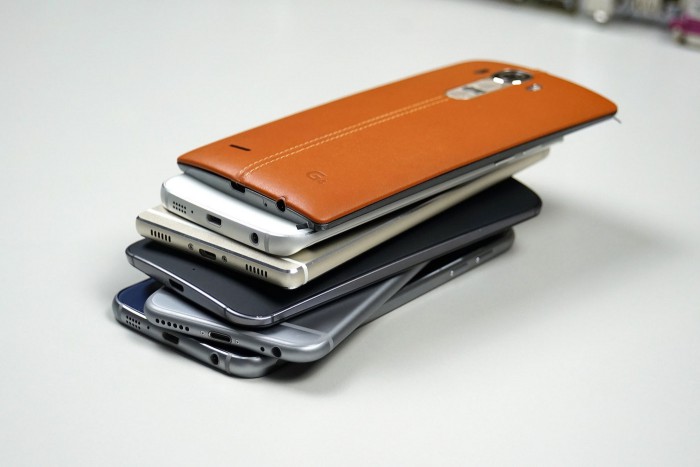
Two years, two dozen experiments, one Brexit and one U.S. presidential election, and hundreds of thousands of readers later, the Guardian Mobile Innovation Lab has wrapped up its work on improving news delivery on smartphones.
It’s examined better formats for push notifications, a web player for podcasts, offline news reading experiences, live polling, and article formats that automatically adjust to readers’ past reading behaviors. It’s worked in public, from setting up the initial questions and problems to gathering user feedback on each project. It’s also deliberately centered its work around off-platform experiences publishers can more easily own — no “how to make good AMP stories” here (platform representatives were invited, but none apparently showed).
The Mobile Lab team and speakers from other news organizations, including some it’s partnered with over the past two years to run experiments, put together some practical insights around newsroom experimentation and innovation in a culminating event on Monday.
Over the past two years, did we ever get in your head?
If so, let us (the @GdnMobileLab) know! https://t.co/S7qhTE9GNp
— Sarah Schmalbach Beck (@schmalie) March 23, 2018
Opportunities for mobile storytelling 👍 #gmilday pic.twitter.com/emu3m3ZUZs
— Laura E. Davis (@lauraelizdavis) March 26, 2018
The Mobile Innovation Lab was funded by a $2.6 million grant from the Knight Foundation, and was intended to carry out its experiments within the Guardian U.S. newsroom. (The Knight Foundation also supports Nieman Lab.) When Nieman Lab first interviewed Mobile Innovation Lab co-leads Sasha Koren and Sarah Schmalbach about their vision for the Mobile Lab, both emphasized the project’s knowledge-sharing mandate, and its embededness in a real newsroom with real technological and editorial needs.
“One of the things that drew me to this project and to this role is that it’s meant to be housed within a live newsroom,” Schmalbach said at the time. “It’s not a project that is just off to the side, or on a different floor, or something people don’t really think about.”On Monday, the team took a step back to look at what newsroom “innovation” requires on a practical level, especially as “innovation” itself has become a muddled buzzword in the past few years.
#gmilday what type of innovation work is happening in your newsrooms? Handy chart from @GdnMobileLab pic.twitter.com/EPy80Vb91d
— Simon Galperin (@thensim0nsaid) March 26, 2018
"We talk about innovation as all the things we want to do, but we don't often talk about our readers' lives and how we fit into them" – 👏 YES 👏 from @tiffanycampbell at #gmilday
— /Greg Emerson/ (@emersongreg) March 26, 2018
Yes. How can it realistically scale? #gmilday https://t.co/WUk6IOLcXD
— Laura E. Davis (@lauraelizdavis) March 26, 2018
The Mobile Innovation Lab was a tightly knit, tiny team. How can larger news organizations balance and respect the schedules of their various team members, who may have competing demands?
@shazna: “News cycles and dev cycles don’t easily sync. How do you manage that?”@samjacoby: “Not well.”#gmilday
— Andrew Losowsky (@losowsky) March 26, 2018
What @_alastair says you (the journalist) can offer a developer in a news lab environment:
– "Involve them from the start."
– "Give them time to research."
– "Encourage them to share with other developers."#gmilday— Eric Carvin (@EricCarvin) March 26, 2018
The speakers also gave some notes on effective experimentation, including how to think about the most relevant metrics for evaluating whether or not readers took to the feature being tested.
Is this an experiment or are you winging it? Do you have a methodology? — @schmalie #gmilday
— Andrew Losowsky (@losowsky) March 26, 2018
Maass Media designed new metrics for @GdnMobileLab: net interaction rate.
(Image: a slide showing the formula for net interaction: positive interaction minus negative interaction divided by total interactions) #gmilday pic.twitter.com/FWIK9vpvuL
— Andrew Losowsky (@losowsky) March 26, 2018
We fought back against the idea that if someone doesn’t tap on a notification, that’s bad — @schmalie #gmilday
— Andrew Losowsky (@losowsky) March 26, 2018
Newsrooms that collaborated with the Mobile Lab on experiments like live, updating push notifications — The Wall Street Journal and Univision, for instance, — described their processes.
How @kasperka worked w/ @GdnMobileLab on jobs report notifications. Notice this ~new thing~ wasn’t an afterthought. But, @madelinebwelsh notes they didn’t get in the way of @guardian’s regular workflow. #gmilday pic.twitter.com/FuKmXoW7wM
— Laura E. Davis (@lauraelizdavis) March 26, 2018
We’ll link to slides and transcripts from the full range of Monday’s talks here as soon as they’re available. The set of concept papers and case studies from the Mobile Lab’s run are available on its Medium page. This Lab’s coverage of that Lab’s experiments are available here.